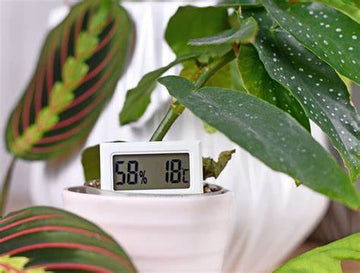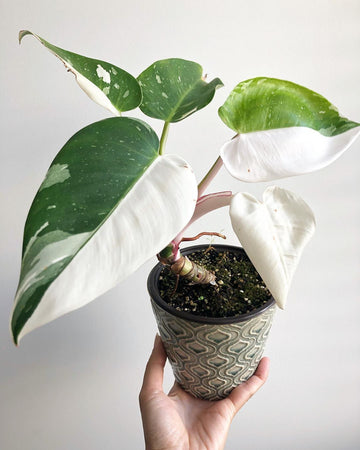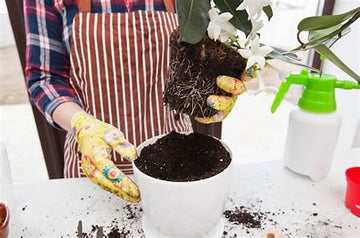In case you are having trouble getting the right temperature for your houseplants, here are a few tips that might help you:
- Use a (mini)greenhouse. A greenhouse is an option to maintain the temperature around your plant(s).
- Beware of draughts. In the winter, you have to watch out for draughts, breezes and gusts of wind. To prevent your plants from falling victim to sudden temperature changes, place them away from vents, windows, doors or other places where air can enter from outside.
- Beware of overheating. It is normal to want to protect your plants from the cold by turning up the thermostat, but too much heat can be just as big a threat to them.
- Group your plants together. If you put your plants together in groups, the air and moisture are trapped between each of them. In this way, they also keep each other a little warmer.
The ideal air humidity for houseplants
One of the biggest problems in keeping plants indoors is spending weeks or months in a room with central heating or another artificial heating method. The good news is that we can prevent and treat humidity problems by knowing the needs of the plants and improving the humidity in our room.
The measurement of humidity is the so-called relative humidity, where water vapour is measured in relation to the number of water particles that can be found in a certain amount of air. So, what is the best humidity level for plants? An ideal humidity level for most adult plants is 60% to 70%. Some tropical plants are used to humidity levels of up to 90%. Many succulents, such as cacti, only need 10% humidity. As a general rule, plants with thicker leaves can tolerate lower humidity levels.
Different humidity levels:
- Low humidity (10-40%): This range suits plants that thrive in arid conditions. The air usually becomes thus dry when heating is used. Cacti and succulents will do well, but most plants will have leaf problems.
- Moderate humidity (40-60%): Most common houseplants thrive in this range. Most homes have this level of humidity in the summer. Some plants still need some help, then you can mist them or place a water tray nearby.
- High humidity (60-80%): This is ideal for almost all tropical indoor plants. However, it is difficult to maintain indoors. You can maintain this level with an enclosed terrarium or small greenhouse.
-
Very high humidity (80-90%): Few houseplants will need humidity this high, but it could suit some very specific tropical plants like certain orchids and carnivorous plants. For humans, however, it is not healthy at all! Only greenhouses or enclosed environments can achieve this level of humidity.

Stress from too low humidity is especially common during heating periods (near radiators and hearing vents), dry climates, or air-conditioned spaces. You can look for signs like this:
- The edges or tips of the leaves turn brown
- Leaf edges turn yellow
- Leaves dry out and shrivel up/curl up
Stress from high humidity often occurs in greenhouses, terrariums, bathrooms, kitchens, or tropical climates. You can look for signs like:
- Fungus/Mildew on the leaves
- Fungus/Mildew on the potting soil
- Leaves and stems start showing signs of rot
How to keep humidity levels right for your houseplants?
In case you are having difficulty getting the proper humidity levels for your houseplants, we have listed a few tips that might be of help to you:
- Misting. Simply mist lukewarm water on the leaves with a spray bottle. Just remember you’ll have to mist frequently as this effect is temporary.
- Group your plants. If you put plants together in groups, the air and moisture are trapped between each of them. They can also use each other's moisture from the soil. If you do this, you have to leave some (growing) space between the plants.
- Tray with pebbles or hydro grains. The tray consists of small pebbles or hydro grains covered with water. The water should be just below the top of the pebbles so the plant does not suck up water and remains well-aerated.
- Humidifier. A humidifier is a device that adds humidity to the air through evaporation. It's probably the easiest way to raise the humidity in your room.
- Hang your clothes out to dry. You can also simply hang your clothes out to dry in the house (near your plants) after washing them. This increases the humidity in the air as the water evaporates from the clothes.
- Use a (mini)greenhouse. A greenhouse is another option to maintain a higher humidity level for your plants. If you have tropical plants, low humidity can kill your plants.





